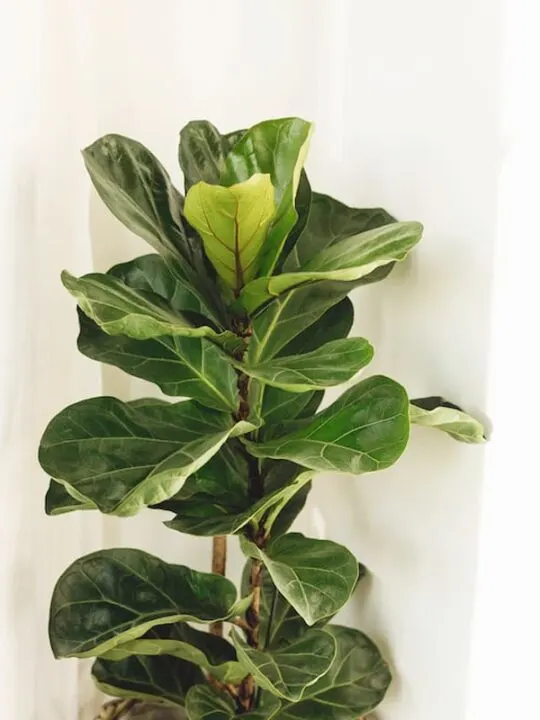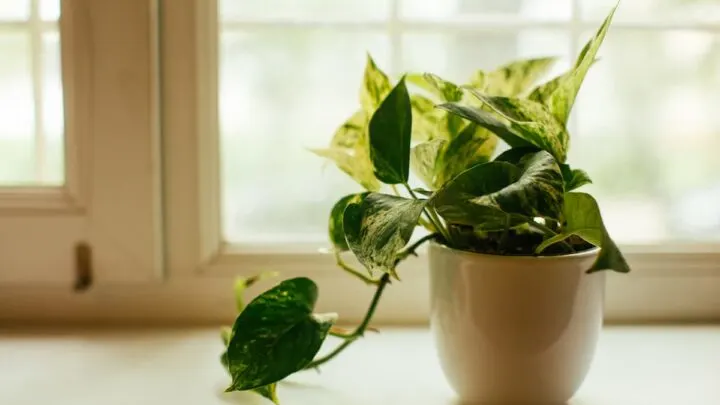Growing succulents is a nice indoor gardening activity, especially in the offseason. Although they are simple to grow, sometimes they can have problems that may require a bit of work on your part. This brings the fiddle leaf fig into question, especially when it comes to root rot.
Unlike most plants, fiddle leaf figs can be repotted if they have root rot. Once they are repotted, they can thrive and grow in their new home.
The most important part is to act quickly and use new soil to repot a fiddle leaf fig. The new soil should be well-draining, and the new pot should have better draining holes.
If you would like the step-by-step process of repotting fiddle leaf figs and to learn more about root rot and fiddle leaf figs, keep reading below.

How long does it take for root rot to develop?
For most plants, root rot takes about ten days to take over and ultimately kill the plant. For fiddle leaf figs, it can take anywhere from one week to 2 weeks. It usually depends on the size of the plant itself. Larger plants will take longer to succumb to root rot.
This is why it is essential to act quickly once you start seeing the signs of root rot.
Is root rot contagious to other plants?
Root rot is highly contagious between plants. Not just the same variety of plants either. Root rot can spread throughout your whole garden. Since root rot is a fungus, it can live in the soil and be transferred from things like garden shovels, hoses, rakes, and people’s hands touching the soil. It is also airborne and can spread through the air.
What does root rot look like on a fiddle fig?
Since root rot occurs in the roots, it can be hard to diagnose immediately. The only way to know if your plant is suffering from root rot is to take the plant out of its pot and look at the roots.
If you notice your fiddle leaf leaves looking brown, that is a good indicator that there could be root rot. Once you notice brown leaves, take your fig out of the pot immediately. Here are all the symptoms of root rot in fiddle leaf figs.
- Browning Leaves
- Mushy Roots
- Soggy Roots
- Discolored, Brown Roots
- Roots are Dripping
- Unpleasant Smell (like mold) Coming From Roots

What Causes Root Rot in Fiddle Leaf Figs?
Fiddle leaf figs, like all plants, need oxygen around their roots. They need oxygen to grow and transport water and nutrients, and they also need oxygen to help prevent root rot and other fungal diseases.
Root rot is caused by excessive watering and too much moisture in the soil. Often, if you have poor-draining soil, or your fiddle leaf fig is in a pot that doesn’t drain properly, the water will sit in the soil and build up over time.
Can a fiddle leaf fig recover from root rot?
Many plants, including fiddle leaf figs, can make a full recovery from root rot. However, they will only recover if you act quickly and get the plant into a new pot with new soil as quickly as possible.
If the roots are completely soaked, mushy, and rotted, then the plant will not recover. A good sign that a plant will survive root rot is if you still see some healthy, white roots poking out from the mess of mush.

How do you fix a root rot fiddle leaf fig?
Let’s look at the steps you can take to fix root rot in fiddle leaf figs.
Step One
Remove the fiddle leaf fig plant from its old pot. Using pruning shears, cut out the roots that are too far gone. Meaning they are incredibly mushy, brown, and soaked. Be sure to thoroughly wash the pruning shears after use.
Step Two
Choose a new container. When choosing a new container, ensure it’s not too much larger than your plant. For instance, if your plant was previously in a 2-gallon pot, you should switch it to a 3 gallon or a 5-gallon pot.
Ensure your pot has proper draining holes in the bottom for excess water to drain out.
Step Three
Get new soil. Since the old soil is infected with root rot, it should not be used to repot your fiddle leaf fig. You will want to get new soil and make sure that it is a proper well-draining soil. Peat moss is the best draining material to plant in. You can use it alone or mix it in with regular potting soil.
Step Four
Once you have your new soil and a new pot for the fiddle leaf fig, you can go ahead and repot your plant.
Fill the pot slightly with soil, and place the fiddle leaf fig in, always gentle with the fragile roots. Once inside the pot, cover with soil and gently tamp the soil down.
Step Five
Often, fiddle leaf figs will suffer from root rot if they are not in a place with good sunlight. Sunlight helps dry out the soil, along with the draining pot. Be sure to place your repotted fiddle leaf fig where it will get full sunlight.

Should I water my fiddle leaf fig after repotting from root rot?
Directly after repotting the fiddle leaf fig, water only once, and do not soak it. Water so excess soil can drain, and so you can be sure the drain is working correctly. Water also helps the plant get situated in its new home.
After the first water, let your fiddle leaf fig dry before watering again. The drying out process could take over a week, sometimes two.
Should I Use a Root Rot Solution?
After repotting your fiddle leaf fig, almost always, the plant should recover quickly. If you did everything correctly, caught it quickly, and didn’t water for a while after repotting, your fiddle leaf fig should be able to bounce back. You would not need to use a root rot solution in this case.
Unfortunately, sometimes simply repotting isn’t enough. In this case, you can use things like root rot solutions and make your own. The most common way to make a root rot solution is using hydrogen peroxide or baking soda.
To make a hydrogen peroxide solution, you’ll want 3% hydrogen peroxide. For every 2 cups of water, use 1 cup of hydrogen peroxide. Pour it into your infected soil.
For the baking soda solution, you will want to get 1 gallon of water—mix 1 tablespoon of baking soda and one tablespoon of cooking oil. Optionally, you can add a few drops of dishwashing liquid. Water your soil with the solution.
Final Thoughts
Root rot can be a very alarming disease. No one wants to deal with root rot; however, when it comes to diseases, it is one of the easier ones to treat. Thankfully, root rot can be cured quickly, unlike other diseases, and your plants and the harvest will not be affected. Timing is key when dealing with root rot, so act quickly! Happy gardening!

Hi there, my name is Allie and welcome to my blog; GareningWithAllie!
Much of what you see written here is just our personal experiences with gardening. Along with the content I write here, there is also a unique collection of gardening topics covered by some of our close friends. I hope you find everything you read here to be helpful, informative, and something that can make your gardening journey the most lovely experience ever! With that said, Happy Gardening!
